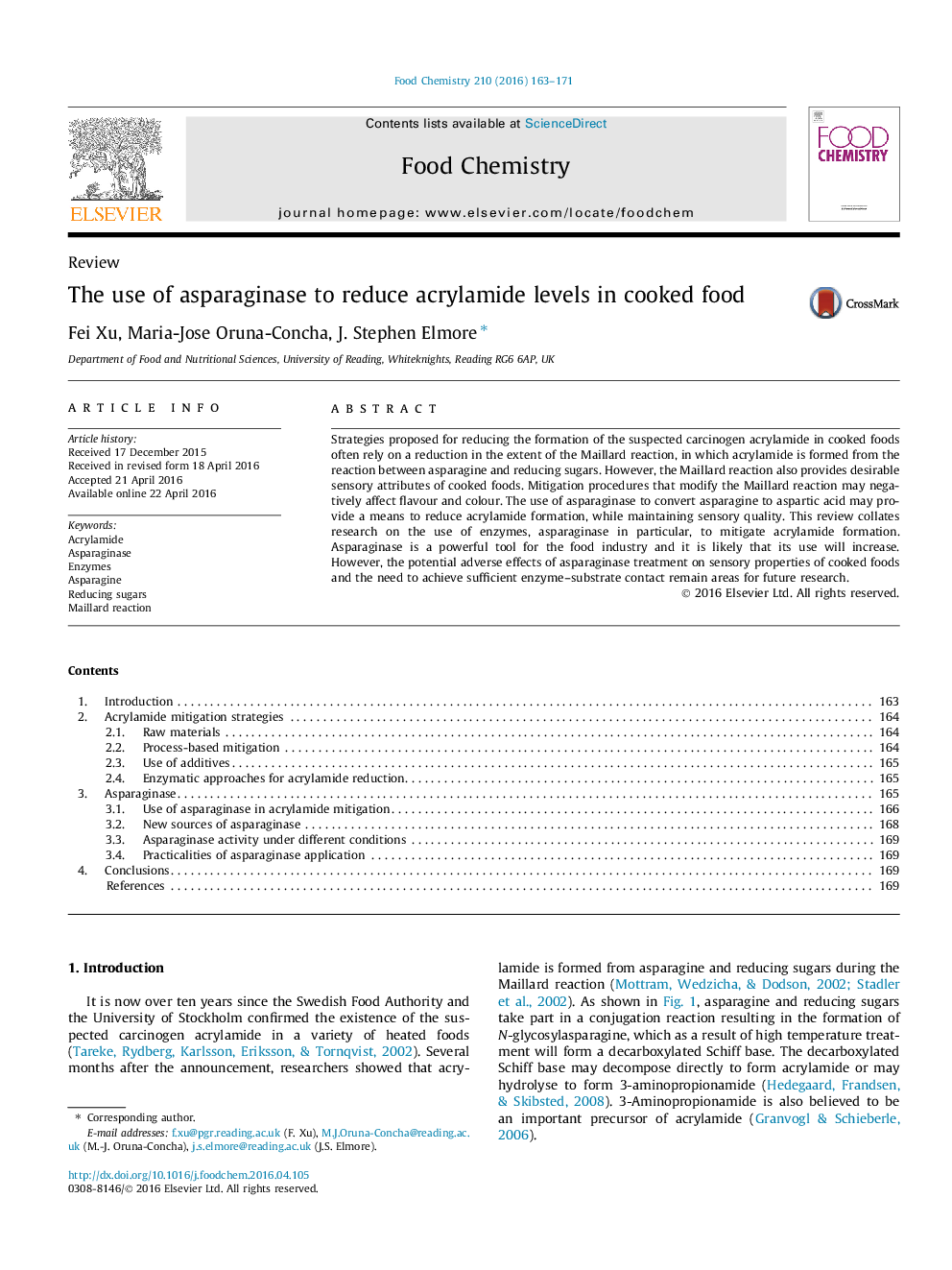| Article ID | Journal | Published Year | Pages | File Type |
|---|---|---|---|---|
| 7587945 | Food Chemistry | 2016 | 9 Pages |
Abstract
Strategies proposed for reducing the formation of the suspected carcinogen acrylamide in cooked foods often rely on a reduction in the extent of the Maillard reaction, in which acrylamide is formed from the reaction between asparagine and reducing sugars. However, the Maillard reaction also provides desirable sensory attributes of cooked foods. Mitigation procedures that modify the Maillard reaction may negatively affect flavour and colour. The use of asparaginase to convert asparagine to aspartic acid may provide a means to reduce acrylamide formation, while maintaining sensory quality. This review collates research on the use of enzymes, asparaginase in particular, to mitigate acrylamide formation. Asparaginase is a powerful tool for the food industry and it is likely that its use will increase. However, the potential adverse effects of asparaginase treatment on sensory properties of cooked foods and the need to achieve sufficient enzyme-substrate contact remain areas for future research.
Related Topics
Physical Sciences and Engineering
Chemistry
Analytical Chemistry
Authors
Fei Xu, Maria-Jose Oruna-Concha, J. Stephen Elmore,
